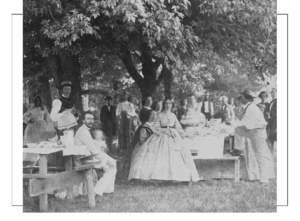
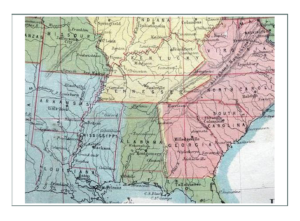
America in Civil War
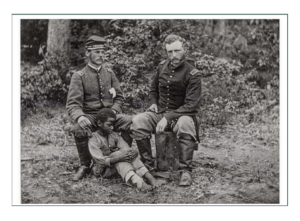
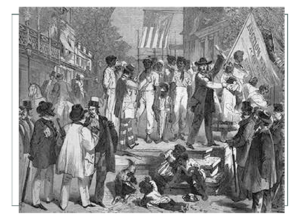
The Civil War had begun in full force, and Americans were divided one against the other. Rural and Western America was expanding, and the effects of the war were distinctly felt as people escaping the War went Westward, as well as people involved in the War. Everyone was suspicious of each other, an the situation in the western territories was leading to the death of the Indian Nations.
We will not attempt to rewrite the thousands of books, documents, photos, and museums here on this page, but will focus on what specific women would have been doing in specific places. We will also tie the fashion to the world at large, and try to connect it to a specific depiction too.
The decade of the 1860’s in the United States was not isolated from the rest of the world. It was the middle of the “Middle Victorian” fashion and cultural era, and had significant factors that contributed to fashion and behavior of women and the culture they created.
Not all the country was at war, and it wasn’t all like in “Gone With the Wind”. The expanding population and geography had pioneers, settlers, homesteaders, and “regular”people carving out a living in town or country; far from war or near it.
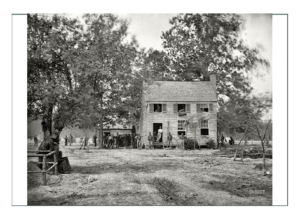
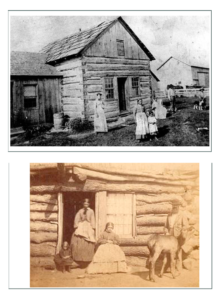

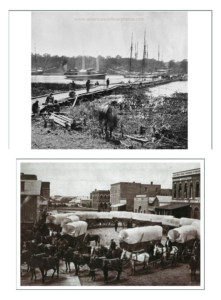

Middle Victorian Fashion Era 1852-1867
We have defined “Middle Victorian” based on our own criteria regarding the influences on fashion from inside and outside. At the time, this was what was happening in the world:
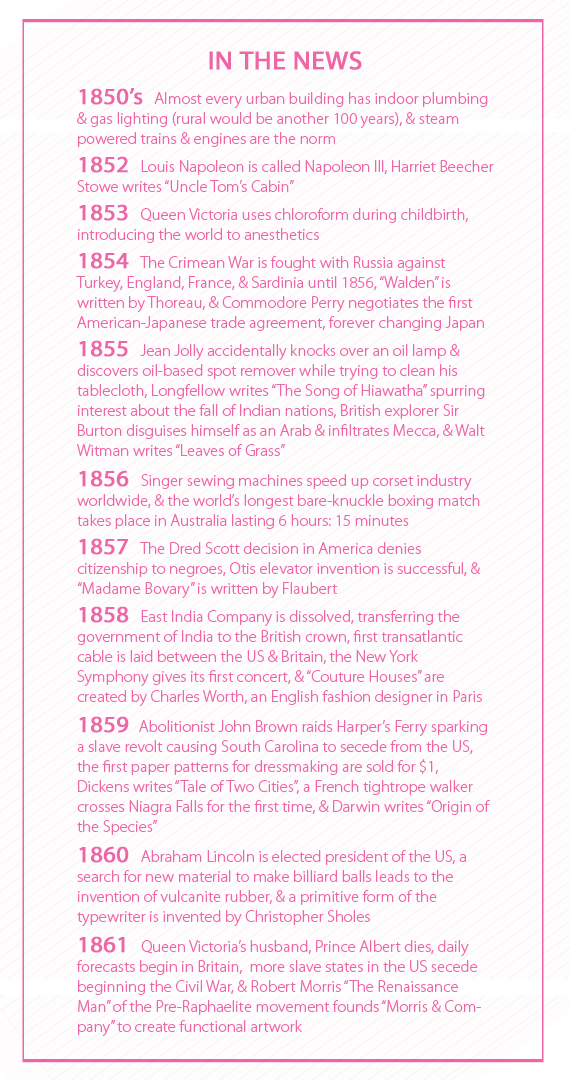
- The British were defeated in the New Zealand Wars
- The Geneva Convention met to establish rules of warfare
- Louis Napoleon, younger brother of Napoleon I, called himself Napoleon III in establishing the 2nd Empire of France in 1852
- 1852-1870 under Napoleon III was a prosperous time in France where quick fortunes were made & there was much consumerism
- Paris was transformed by the rich into a world renowned beautiful city with its tree lined boulevards, paved streets, street lights, theaters, operas, & upscale department stores
- The Crimean War of 1854-56 pit Russia against Turkey, England, France, & Sardinia
- Science continued to advance with a new under Atlantic communication cable
- Pasteurization was a breakthrough for medical science
- America went through Civil War from 1861-1865; ending with the 13th amendment to abolish slavery & Lincoln’s death
- America had uniforms mass produced during the War
- An American steamboat exploded, killing Union soldiers heading for home after the war, & the Homestead Act was issued to settle the West
- The Indian Wars in western US were ended by treaty with the Shoshone who agreed to “stop harassing immigrant trains”
- In America, Thanksgiving was created, the Secret Service was organized, & Alaska was purchased
- American paper currency “greenbacks” were made for the first time
- 1865 was a year of “Yellow Journalism” when William Hearst, editor of a San Francisco newspaper intentionally created “fake news” in false sensational headlines by reporting interviews that never happened, & publishing huge graphic photos promoting the side of whomever Hearst believed to be the “underdog”
- Ready-made & department stores were doing huge business in Europe & the United States
- Catalog sales for nearly anything a person could need were booming, especially in remote & western US regions
- Brigham Young had one of the most prosperous department stores in Salt Lake City, UT
- Riding a horse was a favorite way for men & women to escape norms & expectations of society for all classes
- The horse was also a favorite to race, breed, or gamble on
- Football in England was split between rugby & soccer
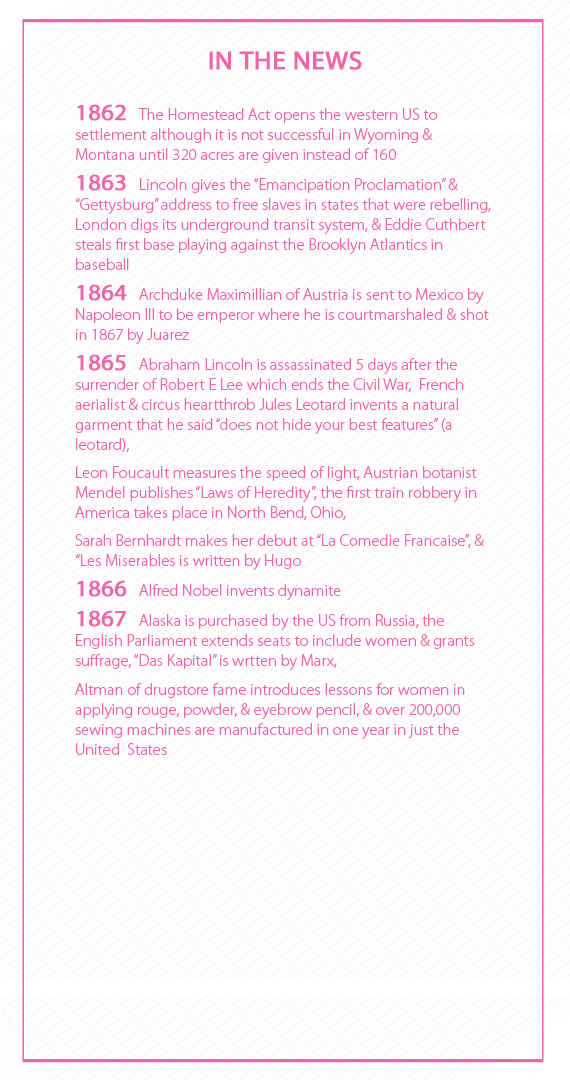
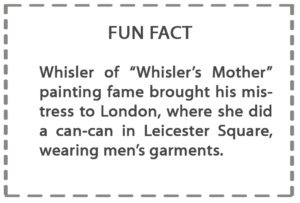

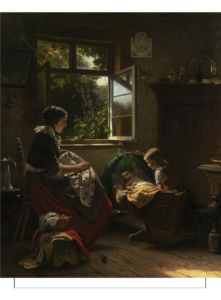
Guessing What it Was Really Like Day to Day
The world of history seems to focus on the strategies of the Civil War and the conflicts political and personal; what the soldiers were doing and not doing. There are thousands of stories about the men and the war – and their women. It seems though, that the stories present the women in some heroic supporting role on the sidelines; the people the men come back to or write to or they are otherwise fuzzy in the background of the tales. The focus of stories is of the atrocities and losses, or of the joys, successes, and freedoms gained.

What, however was it REALLY like for women of 1862? Black, white, Indian, urban, rural, settler, city dweller, Southerner, Northerner, pioneer, civilian, military, etc, there were many many things going on besides the war: settlement, growth, economy, and most definitely – culture. A new culture was being created, and that would be the challenge after the war to blend all the many factions and events into a cohesive whole made up of individuals.
We suspect the answer to “what were women really doing?” hits closer to who and what we are today, than to the glamorous tales told. Most likely the truth was more mundane; getting the laundry done, the family fed, yourself in your corset. Dealing with your period or pregnancies; the feelings of loss, caring for your elder parent; farming the land or tending the business – and so many other scenarios that seem to never be discussed in the history books. There’s little note of how one used the outhouse, or how the barn was mucked, the field weeded, or the “yucky” stuff of life.
That is what we do here: try to find the “space between”, or read between the lines of documented history to understand what it might have FELT like to be a woman at the time.
The best resource we have found in determining what really happened, are the actual hand written diaries. While this is a diary of a soldier, and sees life at the time from his viewpoint, it gives us rather a unique perspective on the fact that in the midst of war, life went on – much as it did before and after – with courtships and love and family and friends – all just doing whatever they could to keep going in life.
 Diary of a Soldier, William Townsend
Diary of a Soldier, William Townsend
“Leisure, Furlough & Women”
After his parole, mentioned at the beginning of his diary, William Townsend was processed back into “normal” military life in what seems to be a relatively agreeable manner. He had time to acquire new clothing, obtain his pay, and surprisingly (considering there was a war still going on), pursue pleasant leisure activities:
April 14, 1863 “We reached Annapolis about 11 OClock a.m. today and stopped at the City Hotel found the Boys that left Libby a week ago still there but they have their orders to leave and I suppose they will go as soon as they are paid Maj JD. Hall Capt Whiting Capt Campbal Cpt Wood Lt Hall E.H. and myself are boarding at this House the rest of the Boys are stopping at the American We reported to the Col commanding the post also went up to the Barracks and drew some clothing and bought some so that we are clean once more”
April 16, 1863 “We went out according to orders to the Paroled camp were mustered and Paid by Maj Rxxx to the 28th Day Feb 1863 inclusive of six hundred and forty one dollars and ninety cents ($641.94) . . . we have to wait for Orders I am having my teeth fixed”
April 17, 1863 “. . . we were out sailing this afternoon and all of us caught some oysters had a very pleasent time . . .”
April 18, 1863 “Went out Horse back riding in the morning boat riding in the afternoon had an oyster Bake caught and went ashore and roasted them were very nice the wind went down had to row back wrote a letter to Sister Mollie”
By late April, two weeks after his release from Libby Prison, William Townsend was allowed furlough and took a brief trip home to Niles, Michigan before joining up with his active duty regiment again full time. Girls and parties were much on his mind. It is interesting to note that during his short visit home Captain Townsend became engaged:
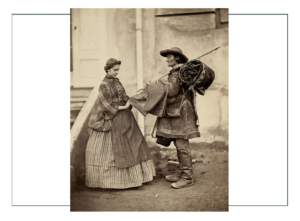
April 28, 1863 “Arrived in Chicago at 8 ½ Oclock this morning could get no train for Niles will go down to Niles this Eve got to Niles at 11 Oclock pm Hired team went down home got there at 1 Oclock found all well”
April 29, 1863 “Sister Mollie was up at Niles . . . saw good many folks were all glad to see me”
April 30, 1863 “ . . . went to a party at Mattie Barons my old flame she was very glad to see me . . .”
May 1, 1863 “Went home this morning and to a party at xxx expect to meet Sarah Fitch . . .”
May 2, 1863 “Had a good time at the party there was about fifty couples at the party Sarah was there rode home with Eva & her and going up to see her this Eve”
May 3, 1863 “Went up to see Sarah last Eve had a good time came up to Niles today and stopped for Sarah and brought her up with us. Father Hattie[sister] & Mother came up also Hattie is going to Cincinnati with me I went up and went to church with Sarah will leave in train tomorrow”
May 4, 1863 “. . . Sarah went up to cars with me & I am engaged to Sarah”
Then Captain Townsend was back on the path to rejoin his regiment. Soon, however, thoughts of his fiancé Sarah were not enough to quell a roving eye. Even as he kept track in his diary of how many letters he wrote to Sarah, he couldn’t resist a few flirtations before returning to his regiment:
May 7, 1863 “Find several ladies on Boat [to Nashville, TN] one young and who is very pretty. Dr. Bidwell & myself played cards with them & Mrs. Johnson today got to Bxxx and took a walk with ladies round the town”
 May 8, 1863 “Wrote to Sarah No 2 and mailed it at Evansville having a very pleasant time with the ladies arrived at Smithland about dark”
May 8, 1863 “Wrote to Sarah No 2 and mailed it at Evansville having a very pleasant time with the ladies arrived at Smithland about dark”
May 9, 1863 “Left Smithland arrived at Fort Donaldson about 5 Oclock went out walking with the ladies did not get back until after dark”
May 11, 1863 “Left F.D. this morning arrived at Clarksville about 6 Oclock went out walking with Miss Lizzie Weakly it is a very pretty town did not get in until after dark”
May 12, 1863 “ Left Clarksville this morning and arrived at Nashville this Eve but it is so late that I will not go on shore to night wrote to Sarah No 3 also to Sister Mollie”
May 13, 1863 “Went into town with the ladies and took them all over the City Miss Weakly is going to Board at Mrs. Cowpers on Cherry Street I am stopping at Commercial Hotel am not well at all will not go out to the Reg [Regiment] until get better spent the Eve with Lizzie Weakly played cards Received a letter from Sarah”
May 14, 1863 “Spent most of the day in my room in the Eve went to see Miss Weakly had a very pleasant Eve wrote Sarah No 4”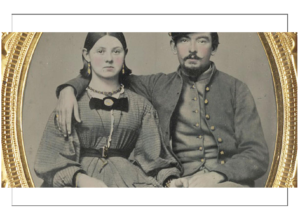
A little more than a month after his engagement, Captain Townsend’s relationship with Sarah Fitch comes to an end with no apparent dismay conveyed in his diary:
June 15, 1863 “. . . Received a letter from Sarah very Civil [formal tone] written June 8th”
June 16, 1863 “. . . I am not going to write Sarah for a week or so and see if she will write me”
June 21, 1863 “. . . Received letters from Sister Hattie, Father and also from Sarah but I have written her and released her from all her engagements also sent her ring and picture back Wrote to Sister Hattie wrote to Miss Lizzie Weakley”
By the end of July, William Townsend and his buddies had hit upon a way to enjoy the company of “young ladies” . . . albeit long distance (note their use of fake names).
July 24, 1863 “. . . Ed & I sent advertisement to Chicago Tribune for Lady correspondents my name as Eugene Julian his Alfred Kingsbury also sent to NY Tribune also Steve R. Ed and my names the same Steve was Dick Thornton. Expect lots of letters soon . . .”
July 26, 1863 “. . . wrote Miss Madge Wildes Flora Clay Co. Ills Received letter & my pictures from Miss Fitch [ex-fiance back in Niles, MI] and my ring Box that is the one I gave her the ring in she said she sent the ring but she could not have done so or else it has been stolen I wrote her acknowledging receipt of the pictures wrote Miss Wildes as Eugene Rathbone”
August 7, 1863 “. . . received eight letters, seven in answer to our advertisements . . .”
August 26, 1863 “. . . received two letters one answer from Sturgis Mich . . . I went down and had photograph [taken] he has the negative for it today get them in three days . . .”
August 27, 1863 “No letters to day everything very quiet I wrote to May Coryell but am not going to send it until I get my photographs so I can send one”

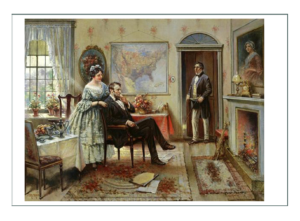
(A copyrighted publication of West Virginia Archives and History)
Silhouettes says: Note the difference between the “seriousness” of the women vs the men:
“. . . last night I think there were over twenty girls in our room eating hickory nuts and talking about war. we all had though of it as having been in the time of our Grand mothers and something impossible at the present time. . . . Mrs. Starr says if the war lasts ten years the north will conquer but the girls do not `take it to heart very much after all. their sober faces soon give place to a laugh‘.” (Mary Wilson Gilchrist to Robert Gilchrist, April 4, 1861)
Since the publication of Margaret Mitchell’s Gone With the Wind in 1936, the most memorable woman of the Civil War has been Scarlett O’Hara. To create this fictional Civil War heroine, Margaret Mitchell combed the published and unpublished diaries, letters and memoirs of the women of the Confederacy. Mitchell attempted to provide an authentic background for a very romantic novel. Yet the tools she used — letters, diaries and memoirs — are the same used by the historian who attempts to distinguish the private lives from the fictional creations of the nineteenth-century domesticated woman.

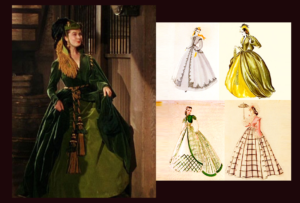
Through the unique perspective of private papers, women of the past come alive and create a bond with the present that reinforces the universal experiences of all women. For instance, the diary if a young girl during the Civil War contains the same laments of all teenage girls; parents, boys, clothes and social affairs. Thus, by personalizing the past, understanding history follows for as Douglas Southall Freeman wrote, “there is stimulation, perhaps inspiration, in making the intimate acquaintance, through candid memoirs, of men and women unafraid.”1
During the Civil War many women noted their feelings and experiences in diaries and letters. Living during a period when their proper sphere was considered to be at home, unable to participate in politics or even publicly voice opinions, women found in diaries an outlet for expressing feelings. So women wrote. 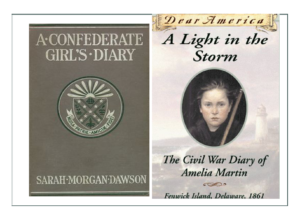 Most of the Civil War history of women has dealt with the women of the Confederacy, perhaps because most of the war was fought on their home soil. But female diaries from other regions exist and offer a different perspective on the war period. The diaries and writings of five women of the tri-state area, Where West Virginia, Kentucky, and Ohio meet, reveal a broader perspective on the Civil War and women. The women of this region separated only by the Ohio River, shared much in their lives: shopping in Cincinnati, reading Cincinnati newspapers, traveling the Ohio by steamer and having friends and relatives living close-by.
Most of the Civil War history of women has dealt with the women of the Confederacy, perhaps because most of the war was fought on their home soil. But female diaries from other regions exist and offer a different perspective on the war period. The diaries and writings of five women of the tri-state area, Where West Virginia, Kentucky, and Ohio meet, reveal a broader perspective on the Civil War and women. The women of this region separated only by the Ohio River, shared much in their lives: shopping in Cincinnati, reading Cincinnati newspapers, traveling the Ohio by steamer and having friends and relatives living close-by.
But the Civil War shattered their commonality. Ohio became a Union state, Kentucky a war-torn border state, and West Virginia a newly created Union state. To what extent did the Civil War intrude upon the lives of women of this region? Did their lives become as diverse as the political paths of their home states? An examination of the diaries and letters of these women should provide answers to these questions.
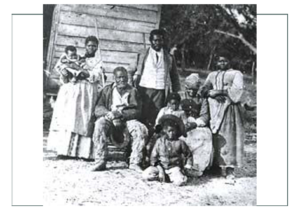
The Women
The five tri-state women: Frances Dallam Peter, Mary Wilson Gilchrist, Mary Aleshire, Henrietta Fitzhugh Barr and Eugeneia Miller Thackston were white, middle- or upper-class, and, by all indications, intelligent. One was a widow, one married, and three were single young women during the war years. Two were Southern sympathizers, three were staunch Union supporters. Four of the women had relatives serving with the military — one with relatives fighting for the Union, two with relatives in the Confederate army, and one woman had relatives fighting on both sides. One woman lived in Kentucky, two in Ohio, and two in West Virginia. Since these five women represent diverse middle-class backgrounds, their feelings and attitudes may reflect those of other middle-class residents of the tri-state in the Civil War period.
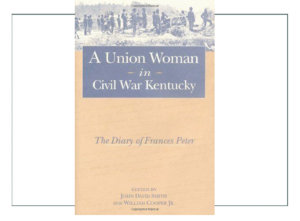
Frances Dallam Peter of Lexington, Kentucky, kept a very revealing and exciting diary. Nicknamed Frank by her family, she was the daughter of Dr. Robert Peter and Frances Paca Dallam Peter. Dr. Peter was originally from Cornwall, England, and later became a naturalized American citizen. A prominent physician and chemist, Dr. Peter served as dean and librarian of the medical school at Transylvania University in Lexington. During the war he took charge of Lexington’s military hospitals. Frances’ mother was descended from the Henry, Preston, and Breckinridge families of Virginia and Kentucky. Her uncle, Willian Paca of Maryland, signed the Declaration of Independence. The family’s position as a leader in the Lexington community was well established.
Lexington was a divided community during the Civil War. Peter’s immediate family were firm unionists, but her diary indicates that other relatives supported the Southern cause. Peter wrote her diary, which covers January 1862 to April 1864, on military supply sheets sewn together in eight books. The diary entries are well-written, reflecting Peter’s perceptions of the war in Kentucky. Often the writing bursts into bitterness as Peter discusses friends and family who are now enemies supporting the Southern cause. The intelligence and sensitivity of the writer makes the Frances Peter diary worthwhile reading for the student of Civil War Kentucky.
Frances Peter was born on January 28, 1843, the fourth of eleven children. As the daughter of a wealthy family, she received a good education and associated with the socially prominent of the town. An epileptic, she spent most of her life at home in a protective environment. Although she remained within the shelter of her family much of the time, the talented Peter immersed herself in writing and drawing.She was a sensitive woman and enjoyed life through the experiences of her brothers and sisters. On August 5, 1864, at the age of twenty-one, Peter died of an epileptic seizure.
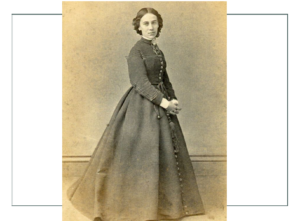
Northeast of Lexington in southern Ohio is the small town of Lebanon, the home of Mary Wilson Gilchrist, the author of a collection of papers, including diaries and letters. Born October 18, 1842, to James Parks Gilchrist and Euphemia Anderson Gilchrist, Mary was the oldest of five children and the only daughter. Her father was a successful dry goods merchant and prominent member of the Lebanon community. James Gilchrist became a charter member of the new Republican party and during the Civil War he was active in recruiting men for the Union army.
As the daughter of a prominent businessman, Mary Gilchrist enjoyed the upbringing and comforts of an upper-middle-class family. At the age of seventeen, she accompanied her father on an eastern tour of the country which included Washington, D. C., Philadelphia, New York City, Niagara Falls, and Cleveland. She also had the added excitement of shaking hands with President James Buchanan during this trip. In 1862, Gilchrist graduated from Ohio Female College in Cincinnati, Ohio. She then returned home where she lived until her sudden death at the age of twenty-four on November 2, 1866.
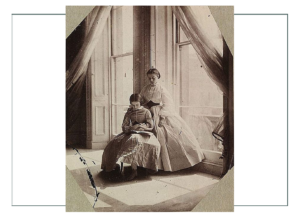
The papers of Mary W. Gilchrist consist of three diaries covering June 1859 to January 1860, August 1861 to June 1866, and August 1864 to May 1865. A journal of her letters was collected by her brother, Robert Wilson Gilchrist, covering June 1858 through May 1866. An apparently intelligent and inquisitive young woman, she wrote about a variety of topics ranging from the pangs of love to the politics of the war. Much of her writing, done during her school years, supplies a storehouse of information on female education during the early 1860s. Her diaries and letters also reflect her comparatively safe geographic location: friendships and fashions dominate her activities while the war sees to touch her life remotely.
Mary Aleshire of Gallipolis, Ohio, began studying at Ohio Female College in 1863, the year after Mary Wilson Gilchrist graduated from school. Aleshire was the only daughter in a family of seven. She was born to Reuben ALeshire of Loudoun County Virginia, and Margaret Shepard Aleshire of Gallia County, Ohio. Her maternal grandfather was Luther Shepard, an early Gallia County pioneer; her great-grandfather was Enoch Shepard, one of the first settlers of Marietta, Ohio. Reuben Alehsire owned a successful flour-milling business. In 1865 he served as president of the city council. The Aleshire family supported the federal governemt and two brothers served as captains in the Union army.
The private papers of Mary Aleshire consist primarily of letters written to her brothers in the army and to her parents while she attended school in Cincinnati. The letters cover the years 1863 to 1865. Much of her writing deals with her school experiences and inquiries about affairs at home. This absence of discussion about the war would seem to be partly a result of her relatively safe geographic location at school and, because traditionally female thoughts were directed away from the political arena. With the exception of worrying about her brothers; safety, Mary Aleshire appears to have scarcely felt the effects of the Civil War.
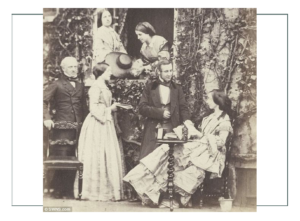
Approximately fifty miles northeast of Gallipolis, Henrietta Fitzhugh Barr wrote her diary in Ravenswood, Virginia, present-day West Virginia. Barr lived on a plantation outside Ravenswood during most of the war years. She was related to the Virginia Fitzhugh family which was granted a charter for land in western Virginia by George Washington. The Fitzhughs left their Virginia plantation in 1834, bringing their slaves with them to their new land.
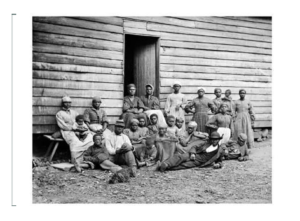
In 1852 the family founded Ravenswood. Upon her marriage, Henrietta Barr left her Ravenswood home, but returned to the plantation after the death of her only child, Mollie, in 1861. By 1860, Ravenswood, a town of three hundred sixty-two people, had become a divided community. The Fitzhughs, with twelve other families, firmly supported the Confederate cause against the majority of their neighbors. Several of Barr’s brothers fought in the Southern army, a point which greatly provoked enmity from former friends.
Henrietta Barr’s diary covers the period from 1862 through August 1863. Entries in the diary graphically illustrate the problems of a Confederate sympathizer in Yankee-occupied territory, problems such as the practice of “pressing” or confiscating food and horses from rebel families, the disrespect for Confederate property, women’s fear of armed men, and continual harassment by Yankee soldiers and citizenry. The well-written journal is filled with humorous and sensitive comments concerning politics, the military, and daily life. As a slaveholder, Barr often wrote of the effect of the war on blacks. The horrors if war are also vivdly refelected in the Barr diary.
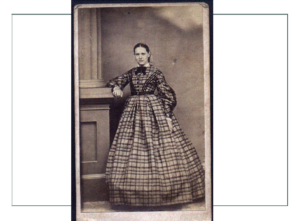
Eugenia Miller Thackston was a native of Barboursville, Virginia. The daughter of William Clendenin Miller, a prominent merchant, and Eliza Gardner Miller, she was the oldest of seven children. She attended school in Greenup, Kentucky, and Cincinnati, Ohio, the returned home where she married Benjamin Thackston of Framville, Virginia.
Thackston had graduated from Randolph-Macon College in Petersburg, Virginia, and then moved to the Barboursville area where he served as the principal of Marshall College from 1858 to 1860. He was teaching school in Barboursville when he and Eugenia married. During their wedding trip, the young couple visited Benjamin’s parents in Prince Edward County, Virginia. While there, Benjamin became involved with the government of the Confederacy and the couple remained in Virginia for the duration of the war. Thackston lived with her husband’s parents while he worked in the auditor’s office of the Treasury in Richmond. When the war was over, the Thackstons returned to Barboursville where Benjamin resumed teaching duties. The Thackstons had seven children and were active in the life of their community. Eugenia Thackston died in 1924.14
The collection of Thackston’s papers comprises her letters written to her husband from 1862 to 1863, while he staryed in Richmond. Thackston wrote of her concerns for the welfare of her husband and family, of loneliness for them, of the difficulty of finding efficient Negro help, of inflation, and of her baby daughter. The love of a wife for her husband is evident throughout the letters. Eugenia Thackston’s letters offer an intimate glimpse of a lonely woman far from home during an uneasy and insecure period.

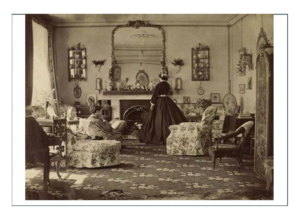
Personal Relationships
During the nineteenth century women heard and read repeatedly that old cliche: “A woman’s place is in the home.” Popular literature and magazines stated that the proper female role was to uphold tradition and values in a changing and increasingly materialistic world. To fulfill this role a woman was to remain in the home guiding and protecting her family from the vice inherent in life. A proper woman was thus “hostage in the home.”
Following the dictates of the day, the “true woman” shaped her life around domesticity. While some women during the Civil War engaged in traditional male roles, they did it out of necessity. If they acted more aggressively, it was in the interests of the survival of their families. Rather than becoming independent during the war years, women and their families became more dependent on each other as they struggled to survive.
The lives of women of the predominantly nonurban tri-state reflect the prevailing nineteenth-century views on the proper female place in society. For these women, “life quite naturally centered on family.” In examining these letters and diaries of these five women, numerous references appear concerning parents, children, aunts, uncles and cousins. The women also wrote profusely on their personal friendships.
Living in a confined world of domesticity and lacking modern day communication and transportation ties with the broader world, they depended on family and friends for companionship, entertainment, and even for existence. Because family and personal relationships were an integral part of the lives of tri-state women, an examination of those relationships is vital to understanding their psyche during the civil War period.

One of the most important influences on the nineteenth-century woman was that of her parents, for she usually lived at home until marriage, or , if she remained single, until her death. A woman’s home was often her parents’ home and this was especially true during the Civil War. When husbands went off to war, wives usually returned to the emotional and financial security of their parents’ homes.
Generally the women tended to respect their fathers, not only as authourity figures, but s providers and protectors. Gilchrist was particularly close to her father. She enjoyed horseback riding and serious discussions with him, writing copiously to him when he traveled east on buying trips. As she considered the military and political events of war, Gilchrist was very interested in the opinions of her father. For example, in a letter to her brother, she wrote, “They say that a man named Cary has returned home from New Orleans a strong Secessionist think of it. he ought to be sent South again. What does Pa think?”
Because fathers provided most of the financial support for their families, single women were dependent on them for their material existence. From a position of dependence, women had to ask their fathers for everything from tuition money to a new pair of gloves. Mary Aleshire wrote, “Tell Pa I will only be away at school one year more to spend money,” as she gave a careful account of her expenditures. And Mary Gilchrist asked her father, “Did Ma say anything to you about getting me a spring hat aka bonnet. do just as you like or please. you will know more about it than me . . . If you decide to get one — remember Pa not pink –”
Although fathers were generally considered protectors, at least one woman, Gilchrist, sometimes reversed that role and acted to defend her father’s interests, even against her mother. In March 1863, after James Gilchrist left for a buying trip in the east, his daughter thought he ought to know that her mother had visited a Mr. George Frost the day following his departure.
“Ma went in a different direction — where think you. but to see Geo. Frost. I told her I thought she had more policy than to call the very next day after your departure. I suspect Georgie will be returning the visit one of these days. how do you advise me to treat him.”
While they seemed to respect and love their fathers, the women examined here tended to have closer personal relationships with their mothers. In a study of the personal writings of eighteenth- and nineteenth-century American women, Carroll Smith-Rosenberg found close mother-daughter relationships characterized by “mutual emotional dependency.
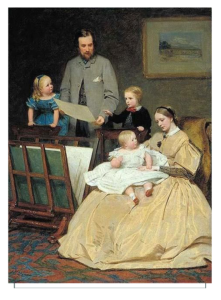
Daughters routinely expressed anxiety in cases of their mother’s ill health and concern for her cares.” Similarly, this theme of concern for their mothers’ well-being ran throughout the letters and diaries of these five tri-state women, especially when the women were away from home.
Mary Aleshire wrote to her mother from school,”I think it is very foolish in you to try to do any or all of the chamber work, you want to lay yourself up sick. Try to get somebody till I come home and then I will pitch in.” In her diary Mary Gilchrist expressed worry for her mother: “Left my dear old home again Ma felt so badly she really loves me I wish she was not so sick.” Eugenia Thackston, living in Prince Edward County, Virginia, was hundreds of miles from her mother in Barboursville, Virginia. Thackston, very close to the hostilities of war, worried often about its effects on members of her family, particularly her mother. She wrote to her husband:
“The news from home is disheartening. I think of my dear Ma all the time and feel that she must sink under her weight of trouble. . . . The family so scattered. Poor Charlies condition. all together is enough to kill her. I often wish that I was with her at this trying time. I might be a comfort her. . . .”
The writings of Mary Gilchrist reveal much about her feelings for her mother. Besides reporting her mother’s visit with a man in her father’s absence, Gilchrist, at times, openly rebelled against her. The so-called generation gap apparently existed within the Gilchrist family.
“Ma and I had another spat ending in setting a couple of sets of water-works at full play. Ma is sick & I ought to have more patience. but I can not sit still & be told I ought to be doing so & so when God knows I try to do my duty. . . . Ma says I waste time I haven’t the talent of accomplishing much.”
As Gilchrist’s diary indicated, the relationship between mother and daughter was unremarkable by modern standards: Gilchrist’ attempt to share experiences and feelings with her mother often resulted in disagreements between the two. For example, Euphemia Gilchrist constantly denigrated one of her daughter’s favorite beaus, Morrow. Consequently, Mary Gilchrist showed he spirit by believing Morrow would be “the greatest someday.” However, when she ended the relationship with the man, her mother changed face as Gilchrist noted in her diary: “I told Ma, she liked Morrow better than I thought.”
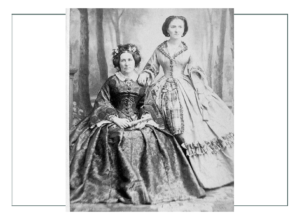
All five tri-state women were members of large families ranging in size from five to eleven children. Their writings contain very little mention of their sisters so it is difficult to ascertain ther relationships, although the relationships between sisters seem to have been affectionate and enduring. Sisters separated by distance did keep in close contact. Henrietta Barr exchanged letters often with her sister, Sarah Cotton, who was married and living in Charleston, West Virginia, and visits between the two sisters were occasions of joy. In the summer of 1863, Barr noted in her diary: “We are surprised and delighted by a visit from Sarah who came on the Logan this evening. It would take reams of paper to write all she told of her journey and of our dear absent ones, so I forbear.”
Perhaps these women wrote little of their sisters because, as sisters, the could easily communicate verbally with each other. However, almost all of the women wrote to and about their brothers. The theme central to these women was fear for their brothers’ lives during the war. Henrietta Barr clearly expressed this fear in her diary in 1862:
“This day a year ago my dear brothers were forced to leave their homes. It was in reality the commencement of the war in Ravenswood. The retrospect is so painful I cannot dwell on it. Dear boys, I know their thoughts are with us as ours are with them.”
Two brothers from the Aleshire family served in the Union army and their sister, Mary Aleshire, corresponded often with them. In this short excerpt from a letter to her mother, Aleshire shows her concern for the mental well-being of her brother, Charles, as she encourages her family to write to him: “[Charles] says he has heard nothing from home for six weeks and for me to tell you if you have no paper to write on. he will send you some as scarce as it is down there.”
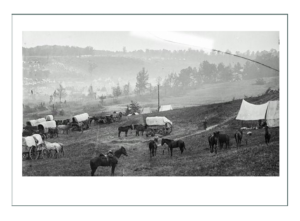
Frances Peter, a staunch unionist, proudly noted in her diary her brother’s enlistment in the Union army after the fall of Lexington to the Confederates in 1862:
“My brother who came in this day hearing that they [Confederates] were going to draft (as recruits didn’t come fast enough) rode straight home & started on foot to join the union forces (as did a good many young men).”34
The brothers of Mary Gilchrist did not serve in the military during the war; Robert, the closest in age to his sister, attended Oxford College in Miami, Ohio, during those years. The relationship between this brother and sister was very close, characterized by almost maternal feelings on the part of Mary Gilchrist.
Nineteenth-century women were informed by popular etiquette books that “in one of her most important functions, the young lady was to provide a constant source of idealism to her brothers. It was of utmost concern that the sister tend to her brothers’ needs.” Gilchrist exemplified this image if the “good sister”; the letters written to her brother often while he was away at school are full of love and encouragement. In the following excerpt, the older sister warns the younger brother to always be his own man.
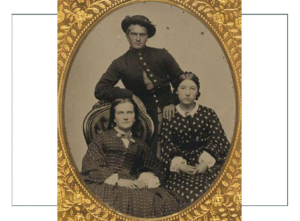
Gilchrist also instructed her brother occasionally on the art of being a gentleman, hoping he would learn from her experience with men. In 1864 she wrote to Robert, “I had a beau home from church last night & he impolitely left me at the gate. twas right that he should not come in — but let me give you a lesson, always see the young lady to the door.” Clearly, Mary Gulchrist was interested in her brother’s growth and well-being.

Another close male/female relationship reflected in these letters is that between a husband and wife. Nineteenth-century women were not usually expected to leave their parents’ home until marriage. According to the standards of the period, marriage and motherhood provided the meaning for a woman’s life. Ideally a woman, upon marriage, would leave her home to make a new home with her husband and he would assume the position of the most significant male figure in her life. Add the joy of children and a woman should consider herself fulfilled.
Henrietta Barr, whose journal contains no references to her husband, buried her only child, Mollie, prior to beginning her diary in 1862; therefore, Eugenia Thackston was the only woman in this study writing as a wife and mother. Her letters provide a brief look at a lonely wife separated from her husband during a war. As such, the writing reflects a loving marital relationship during a difficult time. And as Thackston writes her husband of the growth of their baby daughter, the reader gains an understanding of the love and pride of a young mother, a love which is perhaps intensified by the absence of the child’s father.
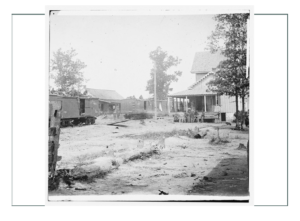
Eugenia Thackston’s letters are full of concern for her husband’s well-being. Warm and adequate clothing for her war clerk husband provided a central issue of worry for the young wife. In 1862 Thackston made a shirt for her spouse from flannel he had purchased for the baby. The following year, still worried about his clothing, she wrote:
“I wish much you had some nice clothing. I dislike it exceedingly that you are so shabby, even if it is war times. I desire you to provide yourself with a new pair of shoes & a hat at any price. . . . Now my Ben don’t put off getting these articles any longer.”
The major portions of Eugenia Thackston’s letters are devoted to emotional expressions of longing for her husband far away in Richmond. The tough wife showed no reticence in writing of her love, both emotional and physical, for her husband:
“You don’t know how anxious I am to see you my Ben. How long it seems since we parted that Thursday morning. I love you so much my sweet. I want some of my good kisses so bad.”

While parents, siblings, and husbands figured largely in the writings of these women, little mention is made of relatives outside their immediate families. Occasionally the visits and news of aunts, uncles, and cousins are discussed and reported in letters and diaries. Frances Peter, however, was particularly interested in the activities of relatives outside her immediate family as the loyalties of her family were as divided as those of her home state, Kentucky. In 1864, Peter notes in her diary:
“My hopeful secesh uncle-in-law Mr. Robb who lives near Georgetown on the Cincinnati road is also gone to the Southern part of the State ostensibly to bu cattle but I would not be surprised if it was to help the rebels.”
These words proved prophetic as, on this occasion, Mr. Robb, married to one of Peter’s aunts, helped Confederate General William Preston escape capture by Union forces. After eluding the Yankees, Robb continued South and joined the Confederate army.
If family constituted a central part of the lives of nineteenth-century women, personal frienships also were extremely important. The writings of the tri-state women testify to the value of these relationships. Affection and excitement, love and disappointment fill the pages of these works as women discussed their sweethearts and their best girlfriends. For it is relationships with favorite peers, as well as with family, which help to define a person’s self-worth; and the development of deep friendship and deep love add a meaningful dimension to life.
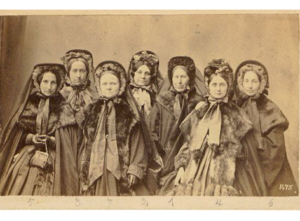
According to Smith-Rosenberh, nineteenth-century women “routinely formed emotional ties with other women. . . . Indeed, from at least the late eighteenth through the mid-nineteenth century, a female world of varied and yet highly structured relationships appears to have been an essential aspect of American society.”
The letters and diaries of the women revealed very little pettiness among girlfriends; rather, friendships were intimate and supportive. During the Civil War period, the female friendships were often strengthened by the shared troubles and adventures of the times. Women seemed to respect and genuinely care for one another.
Mary Gilchrist noted in her diary: “. . . went home with Jennie. she is really sweet — I slept up stairs with her told her all of my secrets.” And upon meeting her roommate at Ohio Female College in 1862, she wrote: “Mollie McGaughey returned at last looking just as she used to she & I will get along rooming together splendidly I know.”
The topic of men fascinated Gilchrist. In fact, that topic seemed to fascinate all the women, but particularly the young women. Mary Gilchrist most openly detailed her feelings about men; her writings offer insight into nineteenth-century middle-class courting relationships.
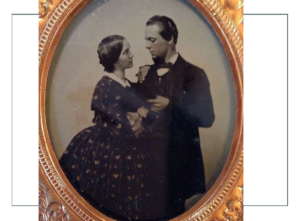
As participants in the ritual known as courting, young women were advised by authors of etiquette books “to present themselves in society as warm, self-controlled, and chaste.” As a corollary to the dictates of self-control and chastity, rules evidently existed in developing courting relationships as indicated by Gilchrist’s diary.
For instance, Gilchrist in 1864 had a favorite beau, Mr. Morrow. He left for school in Ann Arbor, Michigan, in the fall of that year. Before departing, Morrow said good-by to his sweetheart but did not ask her to correspond. Gilchrist felt she was justifiably insulted. However, three days after his leaving, Gilchrist received a letter from him asking her to write. Five days later, she wrote agreeing to correspond. To a modern woman, this beginning of a correspondence might seem painfully slow.
Men were to follow certain rules of conduct for courting women, even down to the correct attire. Gilchrist wrote of a beau:
“Howard [ ] spent the evening with me. he had on his velvet coat & his pants turned up looked like a regular scamp it made me mad I did not [ ] myself to talk to him. he used always to dress up.”
However, the spirited young Gilchrist on occasion did find flouting convention attractive. A proper woman “was not to permit men to squeeze or hold her hand `without showing that it displeased her by instantly withdrawing it‘.”
As Gilchrist got older, she began considering proposals of marriage. Marriage, to the nineteenth-century woman, was to be “not for money, status, or parental approval, but for `love’.” Gilchrist believed in marriage for love and no other reason. Upon rejecting the suite of Morrow, she wrote:
“I dismissed Mr. Morrow last night. I have been sincere God knows & when last Aug. I told him I loved I fully intended to become his wife but tis all vanished. God only knows what is best for us. I prayed for that mans love. & now I wish I never had. we are not congenial yet he seems to love me as his own life & with his soul. God knows what is to become of silly me.”
Gilchrist, in a letter to her brother during the war, expressing feelings common among women as battle claimed the lives of men, and women began outnumbering men, wrote
“our few beaus are fast dwindling away — we will be all old maids alone soon & I believe you don’t want me to be an old maid. I am sorry to disappoint you. but really I fear it must be ever so unless you can recommend some one to my expecial regard I am sure I don’t know any body half good enough.”

Apparently men and women were properly to engage only in affairs of the heart; male friendships were not considered the correct relationships for women, at least according to Mary Gilchrist’s mother. Gilchrist, questioning traditional roles, rebelled against what she thought to be a ridiculous convention. After receiving a letter from a friend, Sam Hunt, Gilchrist noted in her diary, “Ma says I shall not answer it I say I will what harm considers gents as friends not beaus & girls would be far more sensible.”
The writings of these five women reveal loving family relationships with little divisiveness. Friendships with both males and females carried much importance. Friendships between women appear to have been supportive, emotional, and loving, based on the shared commonality of being female. The relationships of these women, with respect to fathers or potential beaus, were not characterized by these same ties. For these tri-state women, family and friends, both male and female, played an important role in their lives as they do for women today, perhaps more so living as they did in a confined world pf domesticity complicated by the insecurities of surviving in wartime.

Educational, Occupational and Social Activities
Besides discussing personal relationships in their letters and diaries, these women wrote at great length on their everyday activities. For these women, as for other nineteenth-century middle-class American women, “the domestic circle was their world.” This world was bounded by, as Smith-Rosenberg states, “by home, church, and visiting.”
By the mid-nineteenth century, the theme of domesticity dominated the lives of American women. The aggressive, self-centered work ethic espoused as a necessary trait for men in an industrializing nation contrasted sharply with the selflessness which was to chaaracterize women as they worked in their proper sphere of the home. The role of women in their “domestic circle,” then, was “to sustain traditional values and practices of work and to stabilize society by generating and regenerating moral character.”
Fulfilling this role necessarily structured the lives and activities of women as most role prescriptions shape the lives of all people.
Nineteenth-century middle- and upper-class female education, for the most part, was based on perpetuating the domestic role prescribed for women. Educators “were quick to defend themselves against any suspicion of interfering with the role in which nature’s God had assigned to women. They hoped to enlarge and deepen that role but not to change its setting.”
This education took place most often in female seminaries or boarding schools which “emphasized correct female behavior more than intellectual development.” Besides teaching skills for use in the domestic sphere, seminaries strongly emphasized religion. Domesticity and religion were thus the basis for female education in the nineteenth century.
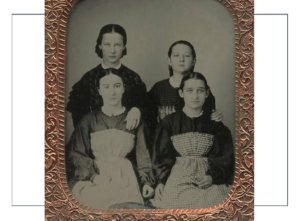
With respect to the education if these five tri-state women, four attended female seminaries in Ohio and Kentucky. Mary Gilchrist and Mary Aleshire attended Ohio Female College in Cincinnati, Ohio, during the war years, although at different times.
The curriculum offered Gilchrist and Aleshire would probably be considered difficult by current standards. Clases taken by Gilchrist during 1861-1862 included trigonometry, English literature, French, music, logic, rhetoric, theology, and vocal music. In one letter home, Aleshire mentioned that she was practicing music and studying chemistry with some difficulty, and she asked if her parents wanted her to take a thorough course in Latin or “just enough so I can graduate.”
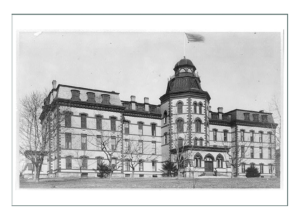
Nonacademic subjects also occupied her time. She excitedly wrote that she was taking gymnastics, telling her parents, “I want you to come the first part so you can see us oractice Gymnastics and they are not certain of having them during warm weather.” Gymnastics was apparently a controversial course, although the best seminaries around the country stressed the importance of the class for the health of their students. The medical profession itself was ambivalent about gymnastics for women” Some doctors “advised the woman to develop he muscles along with her brain, still others deplored physical exercise.
Courses which were generally considered to be male-oriented, such as sciences, “could be hidden behind domestic labels” by educators. For example, chemistry was often justified as useful for the homemaking skill of cooking. Possible composition assignments included “Model Women” and “Uses of the Study of History,” topics compatible within the female sphere. Theology was considered a necessary course as religious education was a primary aim of female seminaries.
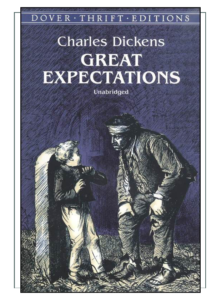
Aleshire wrote of her teachers, “They are doing all they can to have us become Christians and I hope by the Lord’s will I will become one.” Prayer days and religious exercises were common as a means to implant religious principles in students. Aleshire wrote:
“Prayer day at school . . . had section in the morning which was very interesting we each one of us hunted in the bible two commands for praying, two promises that it should be answered and four examples when it had been answered.”
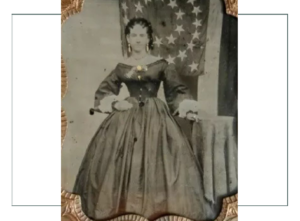
Besides instilling ideas of womanhood and religion in students, teachers also stressed patriotism. For example, George Washington’s birthday in 1862 was celebrated at Ohio Female College with fireworks, a balloon ascension, and the singing of national songs. Gilchrist happily wrote, “We were excused from the regular Saturday morning study hours and visiting was in order all day.”
As the Civil War progressed, schools all over the country encouraged patriotism by organizing groups of students to aid the war effort by knitting, sewing, and performing benefits. At Ohio Female College, Gilchrist wrote, “The girls are making lint for the wounded soldiers now, just to think what it is for.”
While the Civil War may have determined some of the non-academic activities of the female educational institutions, the schools themselves may have been little affected by the war years. Ohio Female Seminary operated uninterrupted throughout the war, although the residence halls were not always full.
Both Gilchrist and Aleshire apparently enjoyed their education. “I am pleased more and more with my school every day,” wrote Aleshire to her parents in 1864. Gilchrist told her mother, “I like my studies all & study hard” and that even included the subject of logic.
Sometimes this worry over assignments did not pay off, and disappointing grades often damaged the students’ pride. Pride in education and intellectual achievement was important.
Graduation did not mark the end of education. As Eliza Farrar, the author of a popular etiquette book of the time wrote, “self-education begins where school education ends.” President Day of Ohio Female College, cautioned his grafuating female students about “foolish young men who when they were through college thought their growth in wisdom had reached the climax.” Education should provide the background for self-improvement and, according to Farrar, one of the best means for that self-improvement was reading.
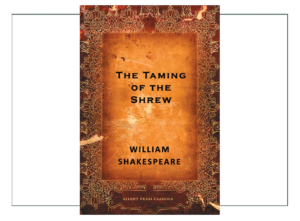
Favorites were The Taming of the Shrew, Othello, and MacBeth. Richard III was found interesting but King Richard “a wretch.” Charlotte Bronte, Confessions of an Opium Eater, Vanity Fair, Lucille, and The Wandering Jew were on Gilchrist’s reading list. She found the author of Tom Jones “to be well acquainted with human nature” and David Hume’s works to be difficult, hoping she would “retain some of it.”
Poetry of Wordsworth, biographies of Luther, histories of England and Egypt, and ancient works by Virgil and Sophocles were also avidly read by Gilchrist. Light novels for entertaining reading were not recommended by educators in the nineteenth-century as they interfered with “serious piety.” Histories and religious biographies were considered proper reading for young women.

While the Civil War seemed to have little effect on female education in the tri-state area, and schools continued to teach women “to become mothers, and not to work outside the home,” it forced some women to become active outside the traditional occupational sphere. As men marched off to war, they left women at home with “both more opportunity and more drudgery.”
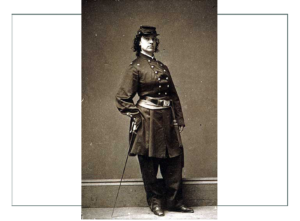
Southern middle-class women worked in a vicious struggle for survival, while their Northern counterparts increased their charitable work. Activities of women across the nation during the war years included farming, homemaking, mothering, nursing, serving, fund-raising, store clerking, teaching, spying, even soldiering. Raising morale was a primary responsibility for the patriotic woman. If women were not active feminists during these years, it may have been because they “didn’t have time to become involved in improving their position.”
As Southern and Northern women engaged in a variety of activities during the Civil War, so did women of the border tri- state area. One of their most important work activities during this period was sewing. The art of needlework was put to good use by tri-state women during the war years as they stitched and knitted for themselves and others.
Dresses, pantalets, nightdresses, chemises, veils, curtains, carpets, aprons, mittens, and socks were items made by Gilchrist in 1859 and 1861.102 February 25, 1862, Henrietta Barr “spent the whole day dressmaking.” The industrious seamstress often found the task of sewing complicated by the economics of wartime. As the war continued and inflation rose, clothing and cloth became scarce and expensive. Women improvised as they struggled to keep their families decently dressed. They made clothing from draperies, rugs, or bedding, and even used spinning wheels to do work.
Cooking was an activity as traditional for women as serving although servants were often responsible for the preparation of complete meals in nineteenth-century middle- and upper-class homes. Gilchrist cooked, baked, and canned, making four sponge cakes within one week. In May 1862, Henrietta Barr “assisted Winny [a black slave] with some pudding and pies for Sunday’s dinner.”
Many women found themselves cooking entire meals for the first time after the emancipation of their slaves. Good home cooking was often sought by men of both armies and women supplied it, sometimes voluntarily, sometimes not. Women often aided hospitals by providing food for the sick and wounded of both sides. Frances Peter wrote in her diary:
“. . . when the hospitals were first brought here, they were poorly supplied with comforts, and had to depend a great deal on the ladies. A great many of the ladies here sent food to the sick three times a day, each lady having a patient or sometimes two or three to whom she sent his meals regularly.”
And when the wounded rebel soldiers needed attention, Peter claimed that the Union women of Lexington provided them with food as the “secesh” women didn’t waste their time with the common soldier, preferring instead to attend Confederate officers. However, women sometimes had little choice in cooking for enemy soldiers. Occupying forces often demanded food as much for maliciousness as from hunger. Barr mentions in her diary an incident which occurred shortly after her family had provided food for the Confederate cavalry forces:
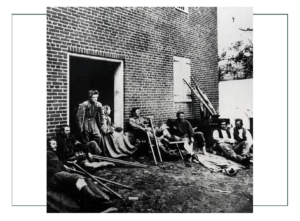
“I was interrupted just after writing the above by a noise downstairs. Upon getting down found six armed men insulting mother in the grossest manner, insisting with many oaths that she should cook for as many of them as she had done for Jenkins. Finding they were determined not to leave without eating, I went out and ordered Winny to get some dinner for them. Winny set to work and soon had dinner on the table for them. They refused to eat until she had cooked an additional quantity for them.
When they were about half through their meal they were reinforced by six more men, more violent if possible than themselves, who ordered a fresh supply cooked. Winny (thinking discretion the better part of valor) complied and the impertinent Yanks having all left, she set about getting dinner for the family . . . we fondly hoped we should never see their faces again . . . which hope was doomed to disappointment. While we were sitting at the table, discussing our dinner, the various insults which had been heaped upon us, 12 men came and commanded us to have supper ready for them in an hour. In this case, as in others, compelled to submit although it is a hard trial to our patience.”
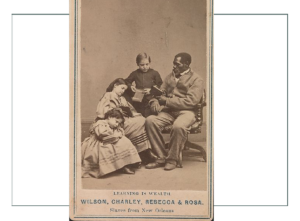
Besides cooking and sewing, women of the tri-state found time for other occupations. Describing her daily chores, Mary Aleshire wrote in a letter to her mother, “Tell Pa I have made the resolution when I come home to get up clean my room and the sitting room before breakfast and the rest after besides the rest of the day I am going to try to read an hour practice two hours and sew I don’t know how long.” Henrietta Barr outlined her typical day, “My mornings are devoted to teaching my little nieces and Lucy Davenport. In the afternoons I read, sew, etc.” As schools were often closed for long periods, women commonly took responsibility for teaching children of family and friends. In fact, it was during the Civil War that teaching became a predominantly female occupation as women filled positions left empty by departing men.
Nursing was another occupation which dominated the time of women during the war years. This is not surprising as caring for the sick at home had always been an integral part of the sphere of domesticity. After a battle in Frankfort, Kentucky, in 1862, Peter wrote, “We heard that an order had been sent to the secesh ladies to be ready for first they said 200 & then 1000 wounded.” Sometimes, however, women were prevented from offering their help to soldiers, especially prisoners. After the Battle of Buffington Island, July 20, 1863 near Ravenswood, West Virginia, Barr wrote of the captured rebel soldiers:
“They had nothing given them to eat and were denied even a drink of water. . . . Anne and I with several others crossed the river in the afternoon to see the prisoners as they passed down. We could not speak to them or administer in anyway to their wants they were so strictly guarded.”
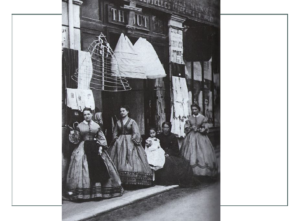
One nontraditional activity of tri-state women during the war was business. As men went to war, tri-state women increasingly had to involve themselves in the business world, carrying out financial tasks ranging from the sale of real estate to reparation demands for damages incurred from unruly troops passing through the area. Henrietta Barr, for example, sold her home:
“I sold my house today to Mr. Robt. Brown of Wirt County for $1000. This is the most expensive business transaction I have ever engaged in. I gave up the house with no regret, never expecting to live in it. It was a source of more trouble than profit.”
Later Barr negotiated business for her mother, noting in her diary, “A man came today to bargain with mother for the iron in the mill. She being too unwell to transact business had to give it into my hands.”
The business transactions of the tri-state women were not always successful, particularly when the women attempted to deal with the men of occupying armies. Barr dealt repeatedly with the Union commanding officers at Ravenswood in trying to gain reparations for damages done by their men. After losing one sow, seven pigs, five or six hens, and nearly all her onions in one night she and her sister, Mary Henry, went in search of the commander. The following passage from Barr’s diary details that encounter:
“We were fortunate enough to meet with him in the street, informed him of our losses, but were treated with such cool contempt it was almost ridiculous. I feel assured from the man’s looks he had just consumed one of our little porkers for breakfast and there was another in course of preparation with a couple of fowls stuffed with onions for his dinner.”
Besides pushing women into nontraditional activities, the war also led more women to engage in illegal ones. Women became spies as well as thieves struggling to survive. In some cases, being female may have helped protect them. During the Civil War, some women in the tri-state were accused of spying or treason. Their punishment varied according to the temperament of the commanding officers. On occasion, a male relative might be held responsible for the woman’s actions or she might be banished from the region, usually under the threat of death if she returned.
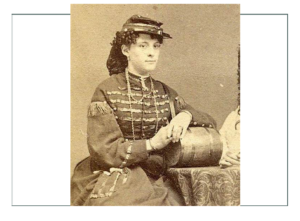
Frances Peter in Lexington and Henrietta Barr in Ravenswood lived in divided communities which changed military hands repeatedly; a condition making most people suspect of treason at one time or another, depending on the current occupying force. Both writers commented on the arrests of women as spies and the kind of treatment they received.
Discussing female lack of accountability, Frances Peter noted the responsibility given men for the illegal activities of their female relatives:
“A Mr. Harcornt was imprisoned the other day and kept in that dirty jail two days & nights. They told him that he had been arrested because they heard his daughter had waved a Rebel flag at the Union ambulance. That is only one out of great many arrests that have been made lately.
“Mrs. Brig. Gen. Joe Shelby who has been staying for a while at her father-in-law’s, Mr. Gratz, has been ordered to leave. Mr. Gratz wrote to Mr. Lincoln to get the order escinded. Mr. Lincoln replied she might stay if Mr. Gratz would hold himself responsible for her good behavior.”
Not all women escaped responsibility for their actions. Banishment to the South was a favored Yankee method of dealing with Southern sympathizers in their midst, though being a sympathizer did not necessarily mean being a spy. Many women were forced into exile under the threat of more severe punishment for offenses ranging from publicly denouncing an occupying army to actually giving information to the enemy. When Henrietta Barr’s sister, Sarah Cotton, was arrested, Barr wrote in her diary:
“After 12 o’clock at night, Friday the 17th, Sarah was arrested and taken over the lines without a word of a trial. She was torn from her little children and threatened if she dared return that she would be `shot as a spy.’ Comment is unnecessary.”
According to Peter, another illegal activity which increased among tri-state women during the war years was stealing. As inflation grew and goods became scarce, women, even those considered ladies, began pilfering what they needed or wanted. Frances Peter discussed this phenomenon and noted the responsibility of men for the illegal acts of women.
“There has been an unusual degree of housebreaking & stealing going on lately; the latter art being not confined to professional artists but women and even ladies, whom one would not think of suspecting of such meanness, have been detected in the act of purloining hats, dress goods etc from the stores. One lady was detected by a shopkeeper in carrying off several pieces of dress goods, and the merchant knowing who she was followed her home, accused her of it before her father and made them pay him the value of the goods.”
While the Civil War led more women to engage in nontraditional activities, many aspects of the sphere of domesticity remained untouched by the war. Women of the tri-state continued to enjoy shopping, considering it a combination of work and pleasure.
One traditional activity increased by war was charity work. Charitable activities ranged from the mundane work of knitting mittens to the excitement of sponsoring a benefit ball. Most commonly, women accomplished charitable work by banding together in soldiers’ aid societies.
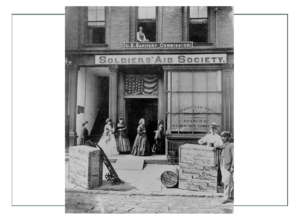 Mary Massey estimates that within two weeks of the outbreak of war over twenty-thousand aid societies came into existence all over the United States. The societies met in homes, churches, or public rooms, wherever supplies and equipment could be collected. For the most part “the groups were the result of women’s initiative and ran on women’s energies.” The societies served the three-fold purpose of enabling the women to express their patriotism, giving them a feeling of usefulness, both in traditional areas of expertise and in expanding their organizational capabilities, and offering an outlet for social activities. In fact, some then felt the social aspect of the societies predominated and condemned them as gossip centers rather than work centers.
Mary Massey estimates that within two weeks of the outbreak of war over twenty-thousand aid societies came into existence all over the United States. The societies met in homes, churches, or public rooms, wherever supplies and equipment could be collected. For the most part “the groups were the result of women’s initiative and ran on women’s energies.” The societies served the three-fold purpose of enabling the women to express their patriotism, giving them a feeling of usefulness, both in traditional areas of expertise and in expanding their organizational capabilities, and offering an outlet for social activities. In fact, some then felt the social aspect of the societies predominated and condemned them as gossip centers rather than work centers.
Sewing was a primary concern of the aid societies springing up all over the country as women struggled to provide warm clothing for the soldiers and bandages for the wounded. Occasionally the handiwork of soldiers’ aid societies fell into the hands of the wrong soldiers — those of the enemy.
While sewing was probably the basic function of the aid societies, these organizations also sponsored benefit activities, such as fairs or raffles, for the favored war effort. Peter wrote of a benefit sponsored by an aid society in Lexington, Kentucky,
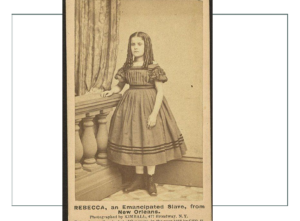
“I must not forget to mention that the Tableaux which the Aid Society have been preparing were exhibited last night and the night before.” Occasionally, the societies themselves would run into hard times and local citizens would raise funds for them. Peter noted, “Tonight the ladies and gentlemen of this city gave an amateur concert, the third one they have given this winter for the benefit of the Soldiers Aid Society.”
Though not necessarily as members of aid societies, women of the tri-state often engaged in fund-raising and charitable activities.“Today the ladies in the vicinity of the camp gave the 33rd Indiana a picnic dinner” and “yesterday the ladies gave the soldiers at the Short Street hospital a dinner.”
When women were not sponsoring charitable functions, they attended them. Thus, charitable functions doubled as social functions. Mary Gilchrist described one such occasion in her diary, “Went to an oyster supper in the church for the benefit of the soldiers . . . the prize of the evening was an acorn basket which was raffled for, at 2S cts a chance. it brought $12.50. & Mat Whipple drew it & gave it to me, to my surprise.
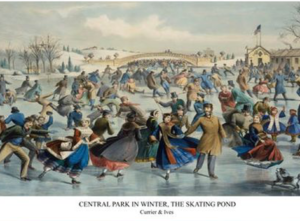
”
Social events for tri-state women were by no means limited to fund-raising activities during the Civil War. A particularly enterprising group of young women in Lexington, Kentucky, Union in sentiment, formed the Sociable Club for the purpose of “dancing and amusement.” Frances Peter left the following description of the Sociable Club:
“None but ladies can be members but each member has the privilege of inviting & bringing with her any gentlemen whom she may chose, always providing that it is not one whose society is disagreeable to any of the other members. The refreshments are limited to three kinds to be left to the choice of the member at whose house the club happens to meet. Ladies are not allowed to come in evening or party dresses, but must wear promenade or `at home’ vilettes. No music to be engaged, but dancing is allowed if there is a piano.”
Dancing was enjoyed by women of the Civil War generation and balls were favorite social events. The diaries and letters of the five women examined here abound with references to dancing.
In towns occupied by military troops, dances were seldom “little” affairs as they were a chief means of diversion for soldiers. The balls, sometimes given by military officers or prominent citizens, were often adorned with symbols of militarism.
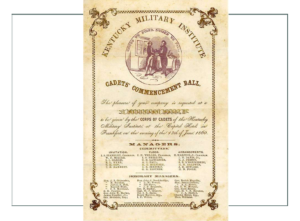
“My sisters describe the rooms as being beautifully adorned. Long flags curtained the windows and stands of colors mixed with sabres, guns, pistols etc were grouped as trophies on the walls.”
In border state communities of sharply divided loyalties, dances often became arenas for displaying patriotic sentiments both peacefully and violently. In Ravenswood, West Virginia, Henrietta Barr, leaving no doubts about her sympathies, wrote of a dance on March 7, 1862, “A UNION BALL at Keeney’s tonight, at which ladies (**xO!) are all to appear a la Mrs. Lincoln and Mrs. McClellan. I have no doubt it will be a killing affair.”
The next day she noted, “The ball at K’s broke up in a great row. Pistols and Bowie knives were more plenty than refreshments. Came very near in reality a `killing affair.’. . .” Even dances could be dangerous in the excited and tense atmosphere of the border states during the Civil War.
During the war years, weddings, as always, were eagerly anticipated social affairs and occurred often as men readied themselves to march off to war. However, these joyous occasions were not nearly as extravagant as in the antebellum years, particularly in the Southern and border states. Nor did weddings escape the tensions of the times in the divided communities. Groups whose sympathies differed from those of the wedding parties sometimes disrupted the occasion.
Besides attending benefits, dances, and weddings, at least two women of the tri-state enjoyed the opera troupe from Cincinnati, Ohio, during the war.
A popular pastime which may have provided relief for women surrounded by war was visiting, perhaps the basic social activity in America in the antebellum years. It was the real means of communication in the world without telephone, daily mail, and mass media.
During the Civil War, some women in the tri-state discovered even this traditional pastime was affected by military conditions. In Ohio, Mary Gilchrist continued her visiting apparently unabated, but women in occupied areas of West Virginia and Kentucky often found visiting curtailed.
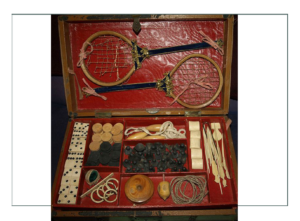
Other popular activities of the Civil War period included games such as euchre, chess, checkers, backgammon, charades, and group singing. Mary Gilchrist enjoyed playing dominoes and “cutthroat” games of euchre with her friends and noted in her diary the day she learned to play chess. Reading, mentioned earlier, was also a favorite way to spend time. Gilchrist also enjoyed outdoor activities such as picnics, ice-skating, and horseback riding with her father and brothers. She even indicated that “fishing was growing quite fashionable.”
Religion was important to the nineteenth-century woman, serving as the basis for her strength. However, it also had an additional function. Religion did not threaten the domestic circle and therefore often acted as an outlet for a woman seeking to break out of the confines of her proper sphere. Cott found the diaries of colonial.
Harriet Martineau, a European visitor and commentator on nineteenth-century America, wrote that American women “pursued religion as an occupation because they were constrained from exercising their full range of moral, intellectual, and physical powers in other ways.” Thus, church work was an acceptable and traditional role for women. Tri-state women during the Civil War did engage in a number of religious activities which contained social and occupational overtones as well as religious ones.
Gilchrist attended prayer meetings and choir practice, taught Sunday school, and in 1864, joined the Young Ladies Christian Commission in Lebanon, Ohio. For her, church activities also served as a means of socializing with men.
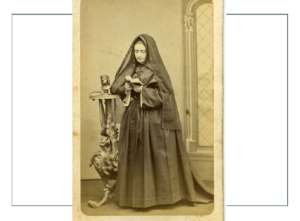
Henrietta Barr spent much time engaged in church activities ranging from “planting, and trimming the shrubbery” in the churchyard to teaching Sunday school. In her community of Ravenswood, church activities suffered some disruption. The Ravenswood Sunday schools divided into Union and Confederate classes as Barr noted on July 4, 1862, “Formerly the anniversary of American Independence. The Union Sunday School assisted by their abolitionist friends are having a picnic, speeches etc. in the woods.” The war also seemed to encourage some women to attend church but not necessarily for religious reasons.
An examination of these papers indicates that the activities of tri-state women during the Civil War varied greatly. Women engaged in the traditional activities within the circle of domesticity while “the challenge of war called [them] almost at once into new kinds and new degrees of activities.” Women did not, however, move from one set of occupational activities to another — the war simply added to the amount and scope of their work.The activities of Peter, Gilchrist, Aleshire, Barr, and Thackston, rich in variety, reflect busy educational, occupational, and social lives. These lives follow the dictates of domesticity and any new range in life activities resulted not from a raising of women’s consciousness, but from the need to protect themselves and their loved ones in time of war.

(from the above text): “The personal papers of these five women offer a glimpse into the realities of women’s lives during a tumultuous period of our history. The writings of Frances Dallam Peter, Mary Wilson Gilchrist, Mary Aleshire, Henrietta Fitzhugh Barr and Eugenia Miller Thackston reveal their feelings toward family and friends, their everyday activities, and the impact of the Civil War on their lives and attitudes.
Most importantly, as these women expressed themselves on diverse topics ranging from war and slavery to love and marriage, their writings shed light on the values of middle-class women living in the mid-nineteenth century and the effect of the Civil War on those values. This article details the day-to-day lives of five women during the Civil War. A second article will focus more specifically on the political and military consequences of the war through the eyes of these women.”
What became clear to us in reading these combined with our other research, is that the life of man in the war was of constant danger. Men were directly involved in the decisions, even a lowly foot soldier seemed to have control of his own life.
In contrast, the women were waiting, watching, wondering – and trying to participate as they could. The same attitudes seemed to pervade all classes and locations. The woman’s nurturing nature and ability to dig in and do what needed to be done is clear. The issue at the time though, becomes very clear: women had no status in the political or business of war. They were forced to play secondary roles in the background.
The fashion of the day supports this role of women at the time that they were in charge of hearth and home and all who dwelled within, but were powerless outside of it. Inside it, they were still subject to the directives of their man, or men in their lives.
On the lighter side of it though we see women bonding together and working as a force of sorts from the inside.. silently guiding their men in some direction(s). They seem to find joy in the little things; a new baby, a friend, dumping the dumb soldier who strayed while engaged. It feels like they were living 2 lives: the demure underling in the presence of men, and the very strong capable will to survive person who could do anything necessary to survive, and see that their loved ones did too.
The prevailing attitude we observe is a patience with the war and with me, while working quietly to make things better.
We will see fashion of the day reflect this polarity in the large and obvious presence of huge skirts, hats, and bold fabrics and trims – while at the same time covering themselves up from head to toe in demure and dainty feminine accoutrements. The cartoons of the day certainly did capture this diverse attitude towards and by women that we see reflected in the above writings.
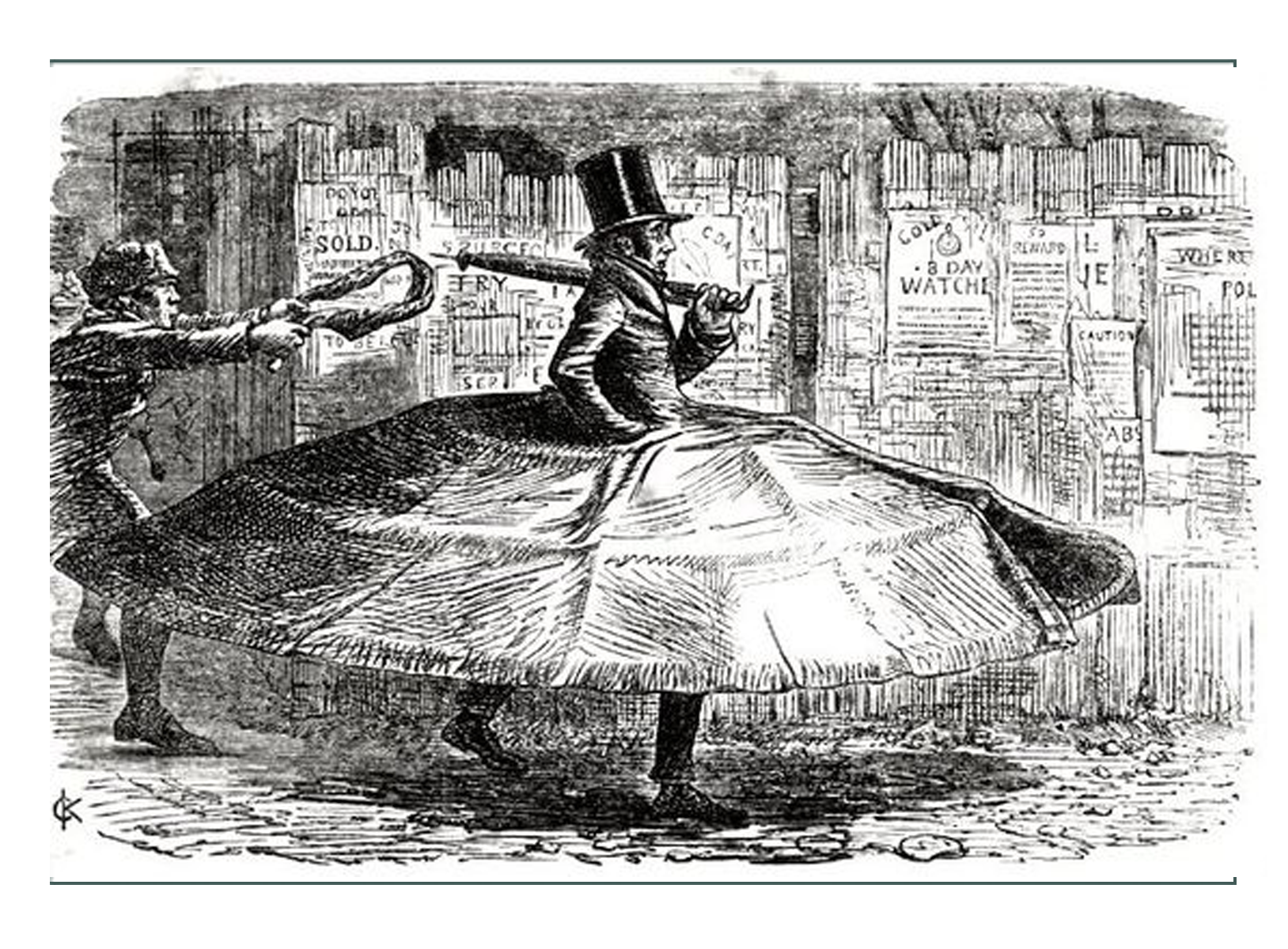
Click here to go to the Fashion History Page (next)
Click here to go to the Design Development Page
Click here to go to the Main page with the Finished Project
Click here to go to the top of this page

